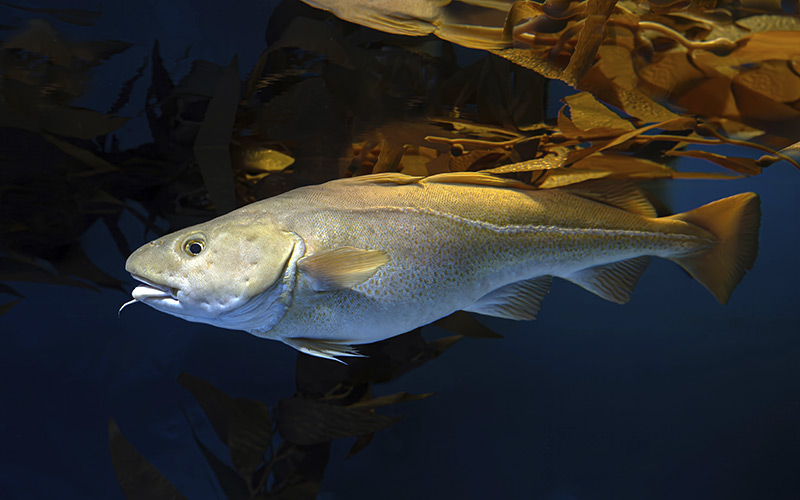
Atlantic cod need protected habitats to recover. Photo: Shutterstock
Early New England colonists bragged that Atlantic cod were so plentiful that they could walk across the water on the backs of the fish. Today, fishing, along with climate change, has changed all that. Atlantic cod populations are hovering at all-time lows. That’s why CLF is working hard to protect one critical ocean fish habitat, the Northern Edge.
The Northern Edge is vital to Atlantic cod
Safeguarding areas where these fish can flourish throughout their lives can make the difference between a bountiful stretch of ocean teeming with fish and a marine ecosystem devoid of life. Recently, when scallop fishermen requested permission to harvest scallops on the Northern Edge, we advocated against it. This region is part of Georges Bank, a large, shallow underwater plateau between Cape Cod and Nova Scotia known for its plentiful marine life, especially for Atlantic cod and scallops.
CLF argued that this area was simply too important to the Atlantic cod’s life cycle to allow scallop fishing. The Northern Edge’s rocky seafloor shelters young cod at a vulnerable point in their life cycle. Without it, the already at-risk population would suffer.
Managing fishing on the Northern Edge
The Northern Edge is protected because the New England Fisheries Management Council, a group that manages fishing in the region for the federal government, considers it a “Habitat Area of Particular Concern” for cod. This designation means fisheries managers have identified it as an area fish use for important parts of their life cycle, like spawning, breeding, feeding, or growing from juvenile to adult. Legally, it must be managed with extra caution.
Since the area was already protected, the Council had to weigh the impact scalloping would have on important habitat for cod and other fish before allowing access to the Northern Edge. Scallop fishermen argued there were times and places when they could harvest scallops without damaging the Northern Edge’s key habitats too much.
The Council is required to analyze any negative impacts the proposed fishing might have and whether those impacts would be “temporary” and “minimal.” If they’re not temporary and minimal, managers need to find ways to manage them.
Protecting Northern Edge for marine life
Unfortunately, in this case, it was clear to CLF that there was no way to safely fish for scallops without significantly damaging the marine environment. For starters, there were concerns that it was a “seed source,” meaning that the scallops growing on the Northern Edge provide the larvae for the scallop populations in other parts of southern New England and Georges Bank.
But in addition to managing scallops, the Fisheries Management Council had an obligation to all the fish, including juvenile cod, that rely on the Northern Edge – and we didn’t let them forget it. Scallop fishing, usually conducted by scraping the scallops off the ocean bottom, would damage the rocky seafloor habitat that protects juvenile cod. Throughout their review of the scallop fishermen’s request, CLF ensured the Council never lost sight of its management responsibilities for all fish that thrive in the region’s rich, varied habitats.
CLF stayed involved throughout the Council’s process to make sure the impacts to other fish were balanced with the potential benefits to scallop fishermen. Various scenarios for allowing fishing were proposed, and it was plain that none would enable the scallop fishery to access the Northern Edge without causing unreasonable harm to other fish species. CLF urged the Council to deny the scallop fishermen’s request, and we’re grateful they followed through.
The Northern Edge is just one of many vibrant marine ecosystems in New England’s waters that deserves protection. CLF will continue working to protect essential ocean habitats.



